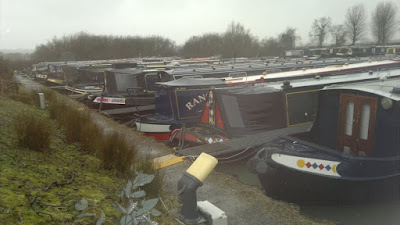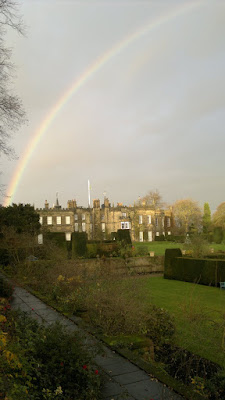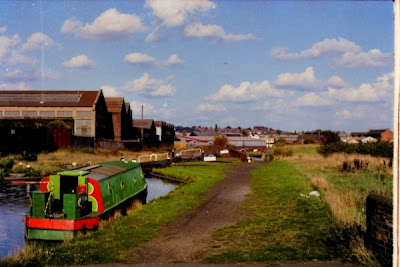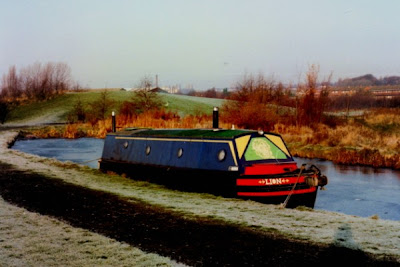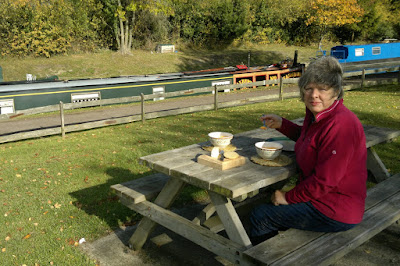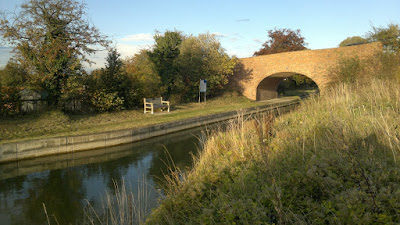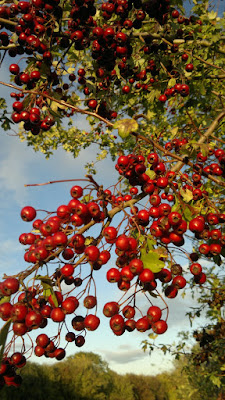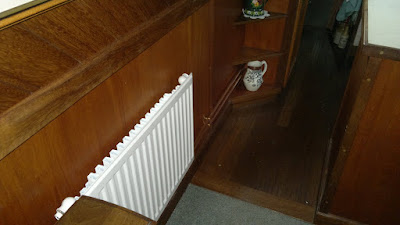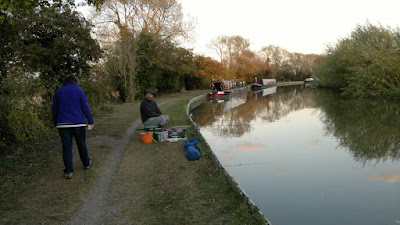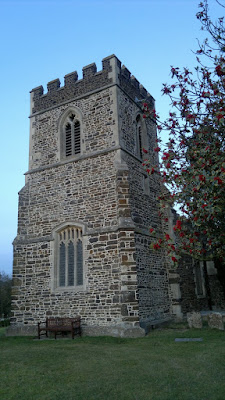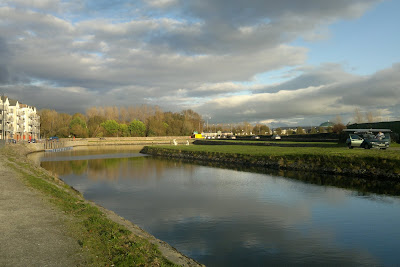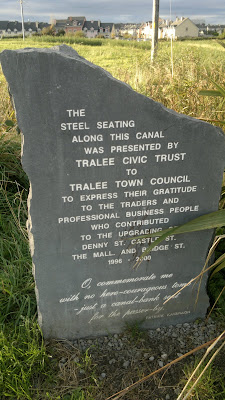I recently discovered an original version of an article published in 1885 of a journey through London on the Paddington Arm and Regents Canal to Limehouse Basin; the same journey
we took in 2008.
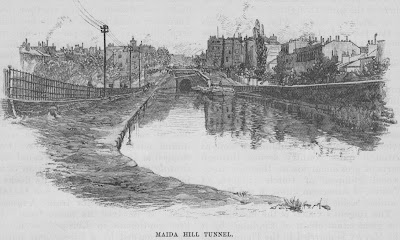
The article was published in
Harper’s Magazine, or Harper ‘s New Monthly Magazine as it was known at the time. This New York magazine has a long and distinguished history and is still published. Indeed the article I am writing about is still available (at cost) as a
PDF download through the magazine’s web site.
The article is full of interesting social history. It reports on conditions along the canal at a time when London was expanding rapidly and was the industrial powerhouse of an empire. The conditions Martin describes are of factories belching smoke and steam, piles of dust, and docks full of shipping from all over the world.

However, he starts by describing more rural scenes. Brentford at that time was largely rural and he describes the journey to Paddington as “made up of twenty miles of the commonest country canalling, albeit through a charming country”. However, Paddington was by the 1880s part of London and Martin wonders about its recent rural history noting that close to Warwick Road “A nice old lady in a sun-bonnet is picking at things in the bushes; a clean old gentleman mends a rake; a muscular maiden mixes manure at a stable door. It is all peaceful and pretty, and it is all that remains of the quiet rural spot called Paddington.”
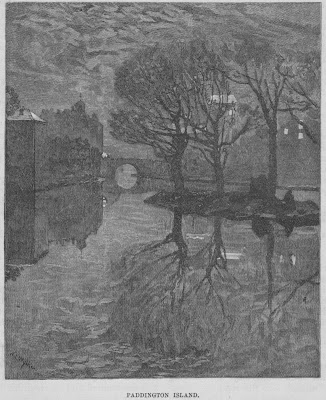
He notes that boats are boats are unloading brick and sand to build the suburbs of Queen’s Park and Kensal New Town and by Battle Bridge he describes large heaps of cinders and dust that “grew higher and higher year by year” and mused that some of these mounds were worth thousands of pounds sterling. In his view “this whole region is a place sweet to the contractor and the dustman doubtless, but surely to no one else. Everything is mercantile, money-grubbing, and sordid”. At Paddington he discovers the work-house is “a long dreary brick structure, set in a vast dreary field” and notes that along the Harrow Road, was the “Lock Hospital for destitute fallen women”. There was, however, the occasional pleasure boat operating along this stretch.

Seeing the numerous boats moored up at Paddington Martin notes, “the whole scene calls up Venice to us all, whether we see it with the setting sun sinking behind or with the dawn breaking over it, or the full moon flooding it. It must surely have been of this bit that Byron wrote, there would be nothing to make the canal of Venice more poetical than this of Paddington were it not for its artificial adjuncts.” Although
Wikipedia notes that Little Venice was believed to have been coined by the English poet
Robert Browning who lived here from 1862 to 1887, it appears that
Lord Byron also has a strong claim particularly since Martin’s journey is contemporary.
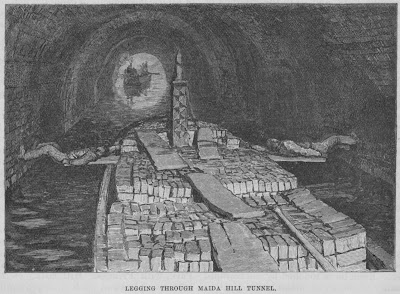
Martin reports being legged through Maida Hill tunnel and describes the use of wings for the leggers to lie on. When passing Regents Park Zoo Martin notes “ the queer boxes and cages lying about on the bank above, in which beasts and birds have been brought from other lands” and “the discordant shrieks of the parrots, housed here in hundreds, drown the piping of the little wild birds in the trees”. One wonders what he would have made of the thousands of parrots that now occupy the western districts of London.

As Martin leaves Regents Park he notes that canals always attract boys as he puts it "men may come and men may go, the canal may change …. but the Boy re¬mains”. I suppose it is still the same – particularly where fishing is concerned.
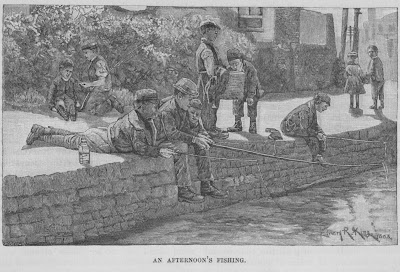
It is not clear what boat Martin travelled on, I suspect he may have travelled on a number, but part of his journey appears to be on the Medway barge Alice. He describes the accommodation in detail and having tea on board.
As he gets closer to Limehouse Martin describes the industrial scene. “The monster coal yards of Rickett Smith and Co. hold mountains of coals, and farther along are acres of chains, and castings, and pipes, and every sort of unwieldy iron thing. The massive walls of foundries stretch along the bank, their tall chimneys, like grenadier sentinels, keeping watch over these fortresses of trade.” He also notes the squalor around Shoreditch, Hoxton and Bethnal Green. At Acton’s lock he found a stationary engine operating by the lock pumping water into the canal. He found one at nearly every lock below this lock to the Thames.

After Stepney Martin found that everything became more nautical and he met many large sailing barges, their masts and sprits “showing picturesquely, their brown sails tied up against them”.
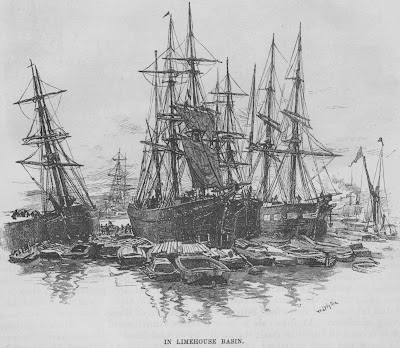
Arriving at Limehouse Martin found himself “in another world, half sea, half land”. His description is so evocative I will quote it at length:
“… vast stone quays and jetties surround a water area of about ten acres, and on the quays and in the water is a busy scene. Men and machinery are at work loading and unloading vessels of every build and every rig, lying alongside the jetties or in the basin, beleaguered by barges. There are sloops and schooners and brigs, paddle-wheel steamers and screw colliers, bluff-bowed Dutch boats, sharp and shapely coasters, some low in the water with their heavy cargoes, some high out, already unladen. Moored together in neighbourly way is the Ulrika Wardo, with pine from Norway, and the Carolina, with ice from Boston; and queer foreign names are painted on the sterns of vessels from every foreign port. The huge rudders of the barges take up as much space as their vessels. On one side men are piling timber; on another they are screening coals; on another they are breaking into small bits and redressing gray granite from Aberdeen and blue granite from Guernsey, which comes rough-dressed for building and for paving. Here are mounds of small stones and sand dredged from the bottom of the Thames, to be sifted and used for concrete; here are heaps of lime and cement; here under sheds is the maddest medley of old iron ever seen — iron pots and pans, hoops and horseshoes, bars and bolts, rails and railings, tubing, rings, nuts, screws, nails, hooks, all the queer scraps ever dreamed of, all that can be bought all over London by perambulating "old rag and bottle men." It is brought here in great vans, piled with that brought up from the Medway by barge, weighed and shipped to Hartlepool, Sunderland, Newcastle, and there born again into useful iron things”
– a bit different today in London’s Dockland!
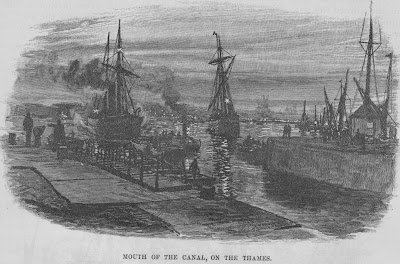
This 20-page article with engravings provides a unique glimpse into our canals when they were still carrying large tonnages. However, the spectre of the railways is there as Martin notes the incredible activity around Paddington, St Pancras and Kings Cross stations and the plans for extending railways throughout London.
I found it truly fascinating article with great illustrations.
